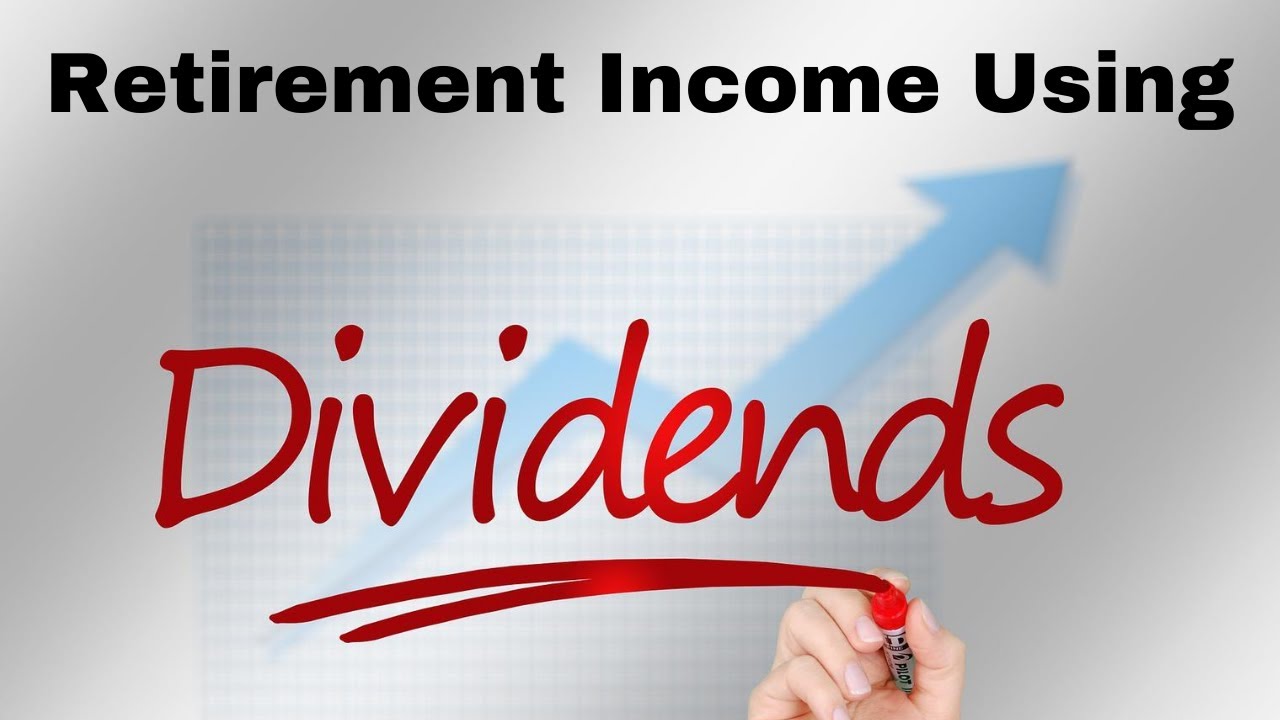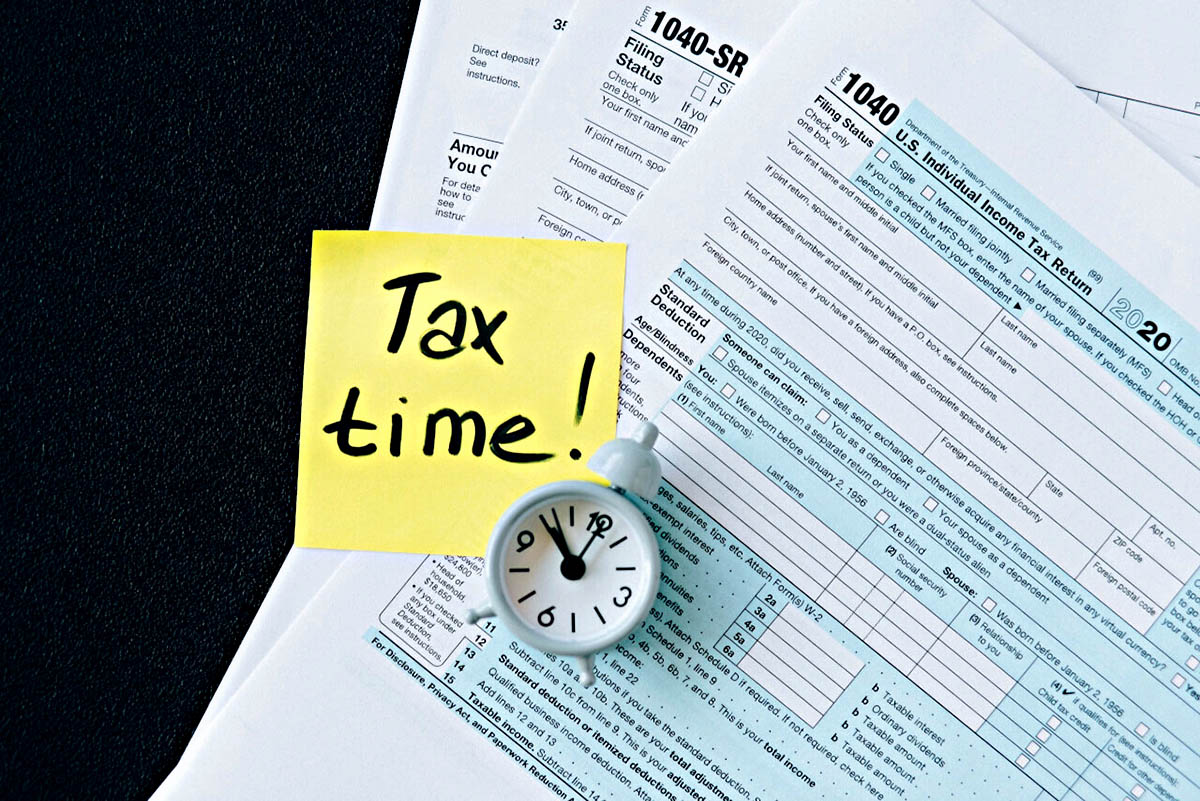Home>Finance>How To Achieve The Zero Tax Bracket In Retirement


Finance
How To Achieve The Zero Tax Bracket In Retirement
Published: January 20, 2024
Learn how to achieve the zero tax bracket in retirement and secure your financial future. Expert financial advice and tips on finance for a tax-free retirement.
(Many of the links in this article redirect to a specific reviewed product. Your purchase of these products through affiliate links helps to generate commission for LiveWell, at no extra cost. Learn more)
Table of Contents
- How to Achieve the Zero Tax Bracket in Retirement
- Introduction
- Understanding Tax Brackets
- Effective Tax Planning Strategies
- Utilizing Tax-Advantaged Retirement Accounts
- Maximizing Social Security Benefits
- Managing Investments for Tax Efficiency
- Utilizing Health Savings Accounts (HSAs)
- Leveraging Charitable Contributions
- Long-Term Care and Tax Considerations
- Estate Planning and Tax Strategies
- Conclusion
How to Achieve the Zero Tax Bracket in Retirement
As you approach retirement, one of your primary concerns may be how to minimize your tax burden and maximize your income. One attractive goal is achieving the zero tax bracket in retirement, where you pay no federal income tax on your retirement income. While this may seem like an unreachable dream, there are several strategies you can employ to reduce your taxable income and potentially qualify for the zero tax bracket.
1. Take Advantage of Tax-Advantaged Retirement Accounts: Contributing to tax-advantaged retirement accounts, such as a Traditional IRA or 401(k), can help lower your taxable income in retirement. By making pre-tax contributions, you are effectively reducing the amount of income subject to taxation. Consider maximizing your contributions to these accounts to lower your taxable income and potentially qualify for the zero tax bracket.
2. Optimize Social Security Benefits: Carefully strategize when and how you claim your Social Security benefits. Delaying your benefits beyond the full retirement age can increase the monthly payout, which may put you in a lower tax bracket. By carefully coordinating your Social Security benefits with other sources of income, you can potentially reduce your overall tax liability.
3. Manage Investments for Tax Efficiency: Be mindful of the tax implications of your investment decisions. Utilize strategies such as tax-loss harvesting to offset gains with losses and reduce your taxable income. Consider investing in tax-efficient funds or tax-exempt municipal bonds to minimize the impact of taxes on your investment returns.
4. Leverage Health Savings Accounts (HSAs): If you are eligible, contribute to a Health Savings Account (HSA), which offers a triple tax advantage. Contributions are tax-deductible, growth is tax-free, and withdrawals for qualified medical expenses are tax-free. By utilizing an HSA for your healthcare expenses, you can reduce your taxable income and potentially qualify for the zero tax bracket.
5. Make Charitable Contributions: Charitable donations can offer tax benefits while supporting causes you care about. Consider maximizing your charitable contributions in retirement to lower your taxable income. Be sure to take advantage of the tax deductions available for charitable giving, potentially putting you in a more advantageous tax situation.
6. Consider Long-Term Care and Tax Considerations: Explore long-term care insurance options to protect your assets and potentially reduce your taxable income. Certain long-term care insurance premiums may be tax-deductible, providing a way to manage your tax liability while addressing potential future healthcare needs.
7. Implement Estate Planning and Tax Strategies: Engage in comprehensive estate planning to minimize the tax impact on your estate. Explore strategies such as gifting assets to reduce your taxable estate and potentially qualify for the zero tax bracket. Consult with a qualified estate planning attorney or tax professional to ensure you are utilizing the most effective strategies for your situation.
By implementing these strategies and seeking professional guidance, you can work towards achieving the zero tax bracket in retirement. Remember that tax laws and regulations are subject to change, so it’s important to stay informed and adapt your tax planning strategies accordingly. With careful planning and a proactive approach, you can minimize your tax burden and maximize your retirement income.
Introduction
Retirement is a time when many individuals look forward to enjoying the fruits of their labor and living a stress-free life. However, one aspect that often weighs heavily on retirees is the tax implications of their income. While it’s difficult to completely escape taxes, there are strategies that can help you reduce your tax burden, potentially even reaching the coveted zero tax bracket in retirement.
The zero tax bracket refers to a scenario where retirees are not required to pay any federal income tax on their retirement income. This can provide significant financial relief and allow retirees to make the most out of their hard-earned savings. Achieving this zero tax bracket requires careful tax planning and taking advantage of available tax strategies.
In this article, we will explore various strategies that can help you achieve the zero tax bracket in retirement. These strategies range from maximizing deductions and credits to making use of tax-advantaged retirement accounts and other tax-efficient investments. By implementing these approaches, you can potentially reduce your taxable income, lower your overall tax liability, and enjoy a more financially secure retirement.
It’s important to note that tax laws and regulations are complex and subject to change. As such, it’s crucial to consult with a tax professional or financial advisor who can provide personalized guidance and help you navigate the intricacies of tax planning in retirement. This article will serve as a starting point to familiarize you with various strategies, but it is not a substitute for professional advice.
By implementing effective tax planning strategies and staying updated on changes in tax laws, you can potentially minimize your tax burden and maximize your retirement income. Let’s explore these strategies in detail and discover how you can achieve the zero tax bracket in retirement.
Understanding Tax Brackets
Before diving into the strategies for achieving the zero tax bracket in retirement, it’s important to have a solid understanding of tax brackets. Tax brackets are the ranges of income to which specific tax rates apply. The United States tax system operates on a progressive tax system, where individuals with higher incomes generally pay a higher percentage of their income in taxes.
The U.S. tax system is divided into several tax brackets, each with its corresponding tax rate. As of the 2021 tax year, there are seven tax brackets: 10%, 12%, 22%, 24%, 32%, 35%, and 37%. The tax bracket you fall into depends on your taxable income, which is your total income minus any deductions and exemptions you may qualify for.
For example, let’s say you are a married individual filing jointly for the 2021 tax year. If your taxable income is between $19,900 and $81,050, you would fall into the 12% tax bracket. This means any income within that range is subject to a 12% tax rate.
Understanding tax brackets is essential when strategizing to achieve the zero tax bracket in retirement. The goal is to minimize your taxable income so that you fall within the lower tax brackets or even potentially eliminate your taxable income altogether.
It’s important to note that while the zero tax bracket is an ideal goal, it may not be feasible for everyone. Factors such as other sources of income, deductions, exemptions, and changes in tax laws can all impact your ability to reach the zero tax bracket. However, by implementing smart tax planning strategies, you can still significantly reduce your tax liability and maximize your retirement income.
In the following sections, we will explore specific strategies that can help you achieve the zero tax bracket in retirement. These strategies can help you reduce your taxable income, take advantage of deductions and credits, and make the most of your retirement savings. Keep in mind that everyone’s financial situation is unique, so it’s crucial to evaluate these strategies in light of your specific circumstances and consult with a tax professional to ensure they align with your goals.
Effective Tax Planning Strategies
When it comes to achieving the zero tax bracket in retirement, effective tax planning is essential. By employing the right strategies, you can minimize your taxable income and potentially qualify for lower tax brackets or even eliminate your tax liability altogether. Here are some key tax planning strategies to consider:
1. Take Advantage of Tax-Advantaged Retirement Accounts: Contributing to tax-advantaged retirement accounts, such as a Traditional IRA or 401(k), is a smart way to reduce your taxable income. With a Traditional IRA or 401(k), you make pre-tax contributions, which means the money you contribute is not counted as taxable income in the year you make the contribution. Instead, it grows tax-deferred until you withdraw it in retirement, at which point it is subject to income tax. By maximizing your contributions to these accounts, you can lower your taxable income and potentially qualify for a lower tax bracket.
2. Implement Roth IRA Conversions: Consider converting some of your Traditional IRA funds into a Roth IRA. Unlike Traditional IRAs, Roth IRA contributions are made with after-tax money. However, withdrawals from a Roth IRA in retirement are generally tax-free. By strategically converting some of your Traditional IRA funds into a Roth IRA, you can create a tax-free income source in retirement, potentially reducing your taxable income and qualifying for a lower tax bracket.
3. Coordinate Social Security Benefits: Carefully plan when to start claiming your Social Security benefits. Delaying your benefits beyond the full retirement age (typically around 66 to 67, depending on your birth year) can increase your monthly benefit amount. By delaying the start of your Social Security benefits, you can potentially lower your taxable income in the early years of retirement and qualify for a lower tax bracket.
4. Strategically Manage Distributions: If you have multiple retirement accounts, such as Traditional IRAs and 401(k)s, consider strategically managing your distributions to minimize taxes. One approach is to withdraw funds from your taxable accounts or tax-free accounts like a Roth IRA first, allowing your tax-deferred accounts to continue growing. By carefully managing your withdrawals, you can potentially keep your taxable income lower and reduce your overall tax liability.
5. Maximize Deductions and Credits: Take advantage of available deductions and credits to lower your taxable income. Common deductions include mortgage interest, property taxes, medical expenses, and charitable contributions. Additionally, there are specific tax credits – such as the Retirement Savings Contributions Credit (Saver’s Credit) and the Earned Income Tax Credit – that can help reduce your tax liability. Explore these deductions and credits to determine if you qualify and leverage them to lower your taxable income.
6. Consider Tax-Efficient Investments: Opt for tax-efficient investments such as index funds or ETFs that have low turnover and generate minimal taxable gains. By focusing on tax-efficient investments, you can minimize the impact of capital gains taxes on your investment returns, potentially reducing your taxable income in retirement.
7. Seek Professional Advice: Tax planning can be complex, and the tax landscape is subject to change. Working with a qualified tax professional or financial advisor can provide personalized expertise and guidance to help you navigate the best tax planning strategies for your specific situation. They can help you identify overlooked deductions, assess the impacts of different strategies, and ensure compliance with tax laws.
Remember, tax planning is an ongoing process. As tax laws change and your financial situation evolves, it’s important to reassess your strategies and adapt them accordingly. By implementing effective tax planning strategies, you can optimize your retirement income, potentially minimize your tax liability, and work towards achieving the zero tax bracket in retirement.
Utilizing Tax-Advantaged Retirement Accounts
One of the most effective ways to reduce your taxable income in retirement is by utilizing tax-advantaged retirement accounts. These accounts offer both immediate tax benefits and long-term tax advantages, making them essential tools in achieving the zero tax bracket. Here are some key tax-advantaged retirement accounts to consider:
1. Traditional IRA: A Traditional IRA allows you to make tax-deductible contributions, which means that the money you contribute is not counted as taxable income in the year of contribution. Instead, it grows tax-deferred until you start taking withdrawals in retirement. These withdrawals are then taxed as ordinary income. By contributing the maximum allowable amount to a Traditional IRA each year, you can significantly lower your taxable income and potentially qualify for a lower tax bracket in retirement.
2. 401(k) and Similar Employer-Sponsored Retirement Plans: Many employers offer 401(k) plans or similar types of employer-sponsored retirement plans. Contributions to these plans are typically made on a pre-tax basis, meaning they are deducted from your paycheck before taxes are applied. This reduces your taxable income for the year. Like Traditional IRAs, 401(k) contributions grow tax-deferred until you begin taking withdrawals in retirement, at which point they are subject to income tax. By maximizing your contributions to these plans, you can lower your taxable income and potentially qualify for a lower tax bracket in retirement.
3. Roth IRA: While contributions to a Roth IRA are not tax-deductible, the withdrawals in retirement are tax-free. This can be advantageous for those aiming to reach the zero tax bracket. By making after-tax contributions to a Roth IRA, you create a tax-free income source for retirement. This can help reduce your taxable income and potentially qualify for a lower tax bracket. Additionally, Roth IRAs have no required minimum distributions (RMDs) during your lifetime, providing greater flexibility in managing your retirement income and potential tax liability.
4. Health Savings Account (HSA): While primarily designed to cover healthcare expenses, HSAs offer unique tax advantages. Contributions to an HSA are tax-deductible, similar to Traditional IRAs and 401(k)s. Additionally, the growth within an HSA is tax-free, and qualified medical expenses can be withdrawn tax-free. In retirement, HSAs can be utilized to cover healthcare expenses tax-free, reducing your taxable income. HSAs also have the added benefit of allowing for tax-free withdrawals for non-medical expenses once you reach age 65, further enhancing their flexibility as retirement investment vehicles.
5. Solo 401(k) and SEP IRA: If you are self-employed or a small business owner, consider utilizing retirement accounts specifically designed for the self-employed, such as a Solo 401(k) or SEP IRA. These accounts offer higher contribution limits than Traditional IRAs and can provide significant tax savings. Contributions to these accounts are typically tax-deductible, allowing you to reduce your taxable income and potentially qualify for a lower tax bracket in retirement.
By maximizing your contributions to tax-advantaged retirement accounts, you can significantly lower your taxable income in retirement and potentially reach the zero tax bracket. It’s important to review the contribution limits, eligibility criteria, and any income restrictions associated with these accounts to ensure you are making the most of their tax benefits. Consulting with a financial advisor or tax professional can further help you determine the best strategies to optimize your retirement savings and minimize your tax liability.
Maximizing Social Security Benefits
Social Security benefits play a significant role in many retirees’ income streams, so maximizing these benefits can have a significant impact on reducing your taxable income and potentially reaching the zero tax bracket. Here are some strategies to consider:
1. Delay Taking Social Security: The age at which you start claiming your Social Security benefits can greatly impact your overall retirement income and tax liability. While you can start receiving benefits as early as age 62, doing so will result in a reduced monthly benefit. On the other hand, delaying benefits beyond your full retirement age (FRA) can increase your monthly benefits by a certain percentage. By delaying benefits, you can potentially increase your overall income while minimizing your taxable income in the early years of retirement.
2. Coordinate Spousal Benefits: If you are married, it’s important to coordinate your Social Security claiming strategy with your spouse. When one spouse delays their benefits, the other spouse can claim spousal benefits based on their partner’s earnings record. This can provide additional income while allowing the higher-earning spouse’s benefits to grow. By strategically coordinating spousal benefits, you can optimize your combined Social Security income and potentially reduce your taxable income.
3. Review Filing Status: Determining the optimal filing status can impact your Social Security and overall tax situation. For married couples, filing jointly may provide more beneficial tax treatment, while filing separately may limit your Social Security benefits. It’s important to assess the tax implications of each filing status and choose the one that minimizes your overall tax liability and maximizes your Social Security benefits.
4. Utilize File and Suspend: The File and Suspend strategy, which was eliminated for those born after 1953, involved one spouse filing for Social Security benefits and then immediately suspending them. The benefit of this strategy was that it allowed the other spouse to claim spousal benefits while allowing the suspended benefits to grow. If you are still eligible for this strategy, it can be a valuable tool for optimizing your Social Security income and tax situation.
5. Minimize Other Retirement Income: Strategically managing your other sources of retirement income can help minimize your taxable income and potentially reduce your tax liability. By carefully managing withdrawals from retirement accounts and other investments, you can control your overall income and potentially keep it within a lower tax bracket. This can help you maximize your Social Security benefits and reduce your tax burden.
6. Leverage Roth IRA Distributions: Roth IRA distributions are not included in your taxable income, making them an excellent source of tax-free income in retirement. By utilizing Roth IRA distributions, you can supplement your Social Security benefits without increasing your taxable income. This can help keep you in a lower tax bracket and potentially reach the zero tax bracket.
Maximizing your Social Security benefits requires careful planning and consideration of various factors. Consulting with a financial advisor or a Social Security specialist can help you navigate the complexities of the Social Security system and make informed decisions to optimize your benefits and minimize your tax liability. By strategically coordinating your benefits and considering the interplay between Social Security and other retirement income sources, you can work towards maximizing your retirement income while potentially reaching the zero tax bracket.
Managing Investments for Tax Efficiency
When it comes to achieving the zero tax bracket in retirement, managing your investments for tax efficiency can be a powerful strategy. By adopting the right investment approach, you can minimize the impact of taxes on your investment returns and potentially reduce your overall tax liability. Here are some key considerations for managing your investments for tax efficiency:
1. Tax-Loss Harvesting: Tax-loss harvesting involves selling investments that have experienced a loss to offset realized capital gains and potentially reduce your taxable income. By strategically realizing losses, you can reduce your overall tax liability in a given tax year. It’s important to adhere to tax laws and seek guidance from a tax professional when implementing tax-loss harvesting strategies.
2. Utilize Tax-Efficient Funds: Some mutual funds and exchange-traded funds (ETFs) are specifically designed to be tax-efficient. These funds aim to minimize taxable distributions to shareholders by employing strategies such as low turnover or focusing on tax-efficient asset classes. Investing in tax-efficient funds can help minimize the impact of taxes on your investment returns, potentially reducing your taxable income in retirement.
3. Consider Tax-Exempt Municipal Bonds: Tax-exempt municipal bonds, issued by state and local governments, offer interest payments that are typically exempt from federal income tax. By investing in these bonds, you can generate tax-free income, potentially reducing your taxable income and reaching a lower tax bracket. It’s important to evaluate the risks and rewards of individual municipal bonds and consider your specific financial situation before investing.
4. Optimize Asset Location: Different types of investments are subject to different tax treatments. By strategically locating your investments in taxable, tax-deferred, and tax-free accounts, you can optimize your overall tax efficiency. For example, tax-efficient investments with low distributions may be more suitable for taxable brokerage accounts, while tax-inefficient investments might be better suited for tax-advantaged retirement accounts. By considering the tax implications of each account type, you can potentially reduce your taxable income and maximize your after-tax investment returns.
5. Manage Required Minimum Distributions (RMDs): Once you reach age 72, you are required to start taking RMDs from traditional retirement accounts such as Traditional IRAs and 401(k)s. RMDs are subject to income tax and can potentially push you into a higher tax bracket. To manage RMDs, consider distributing your required amounts strategically throughout the year or utilizing qualified charitable distributions (QCDs), which allow you to directly donate to a qualifying charity while excluding the donated amount from your taxable income.
6. Long-Term Capital Gains: If you hold investments for more than one year before selling, any resulting capital gains are considered long-term and are typically taxed at a lower rate. By focusing on long-term investing and holding investments for the required period, you can take advantage of preferential tax rates on capital gains, potentially reducing your overall tax liability.
7. Seek Professional Advice: Managing investments for tax efficiency can be complex, especially as tax laws change over time. Working with a qualified financial advisor or tax professional can provide valuable guidance and insights to optimize your investment strategy for tax efficiency. They can help you evaluate investment options, implement tax-efficient strategies, and ensure compliance with tax laws.
By managing your investments for tax efficiency, you can reduce the impact of taxes on your investment returns and potentially reach the zero tax bracket in retirement. It’s important to regularly review and adjust your investment strategy as needed to align with your goals and changing tax laws. With careful planning and a focus on tax-efficient investing, you can maximize your after-tax returns and work towards achieving greater financial security in retirement.
Utilizing Health Savings Accounts (HSAs)
A Health Savings Account (HSA) is a tax-advantaged savings account that individuals with a high-deductible health insurance plan can utilize to save for qualified medical expenses. HSAs offer unique benefits, making them a valuable tool not only for healthcare savings but also for reducing your taxable income and potentially reaching the zero tax bracket in retirement. Here’s how you can leverage HSAs to your advantage:
1. Triple Tax Advantage: HSAs provide a triple tax advantage. First, contributions to an HSA are tax-deductible, meaning you can reduce your taxable income by contributing to your HSA. Second, the growth within the HSA is tax-free, allowing your funds to potentially grow over time without being eroded by taxes. Finally, qualified withdrawals from an HSA for eligible medical expenses are tax-free, providing an additional source of tax-free income in retirement.
2. Maximize Contributions: Contribute the maximum allowable amount to your HSA each year. For 2021, the contribution limits for an individual are $3,600, and for a family, the limit is $7,200. If you are age 55 or older, you can make an additional catch-up contribution of $1,000. By maximizing your HSA contributions, you can reduce your taxable income significantly, potentially reaching a lower tax bracket in retirement.
3. Invest HSA Funds: Many HSA providers allow you to invest your HSA funds in various investment options once you surpass a certain account balance threshold. By investing your HSA funds, you have the opportunity for growth, potentially increasing your savings for future medical expenses. It’s important to evaluate investment options, fees, and risks before investing your HSA funds.
4. Preserve HSA Funds: Unlike Flexible Spending Accounts (FSAs), HSAs do not have a “use it or lose it” provision. This means that any unused funds in your HSA can carry over from year to year, allowing you to accumulate savings for future medical expenses. By preserving your HSA funds and utilizing them strategically, you can maximize the tax advantages and potentially reduce your taxable income in retirement.
5. Utilize HSA for Qualified Medical Expenses: Withdrawals from your HSA for eligible medical expenses are tax-free. This includes expenses such as doctor visits, prescription medications, dental and vision care, and certain medical procedures. By utilizing your HSA funds for qualified medical expenses, you can effectively reduce your taxable income by the amount spent on healthcare.
6. Use HSA as a Retirement Account: In retirement, once you reach age 65, you can use your HSA funds for non-medical expenses without incurring the 20% penalty. While these withdrawals are subject to income tax, utilizing HSA funds for non-medical expenses in retirement can still provide valuable flexibility and potentially reduce your taxable income compared to other retirement accounts.
7. Keep Track of Receipts: Maintain records of your qualified medical expenses and associated receipts. This documentation will be valuable when substantiating withdrawals from your HSA, especially if you need to prove that the expenses were eligible according to IRS guidelines. Keeping organized records ensures compliance and smooth management of your HSA.
Utilizing an HSA can be a smart financial strategy for both medical savings and reducing your taxable income. By maximizing contributions, investing wisely, and utilizing HSA funds strategically for healthcare expenses, you can reduce your tax liability, potentially reach a lower tax bracket in retirement, and secure valuable funds for medical costs in the future. Consult with a financial advisor or tax professional to ensure you optimize your HSA strategy according to your unique circumstances and objectives.
Leveraging Charitable Contributions
Charitable contributions not only allow you to support causes you care about, but they can also provide valuable tax benefits and potentially help you reduce your taxable income. By strategically leveraging charitable contributions, you can make a positive impact while potentially working towards the zero tax bracket. Here’s how you can maximize the tax advantages of your charitable giving:
1. Itemize Deductions: To benefit from charitable contributions, you must itemize your deductions on your tax return. This means listing your deductible expenses, including qualified charitable contributions, rather than taking the standard deduction. It’s essential to keep track of your charitable donations throughout the year and obtain proper documentation, such as acknowledgement letters from the organizations you supported.
2. Donate Appreciated Assets: Consider donating appreciated assets, such as stocks, mutual funds, or real estate directly to charitable organizations. By donating appreciated assets rather than selling them, you can avoid capital gains taxes on the appreciation, potentially reducing your overall tax liability. Be sure to research and follow the guidelines for properly valuing and transferring such assets to ensure compliance with tax laws.
3. Qualified Charitable Distributions (QCDs): If you are age 70 ½ or older and have a Traditional IRA, you can make Qualified Charitable Distributions (QCDs) directly to eligible charitable organizations. QCDs allow you to transfer funds from your IRA to a qualified charity, up to $100,000 per year, without counting the distribution as taxable income. This can be particularly advantageous if you would otherwise be subject to required minimum distributions (RMDs) that increase your taxable income.
4. Donor-Advised Funds (DAFs): A Donor-Advised Fund (DAF) is an investment account specifically designated for charitable giving. By contributing to a DAF, you can receive an immediate tax deduction for the donation while retaining the ability to recommend grants to specific charities over time. This provides flexibility in managing your charitable giving while potentially lowering your taxable income in the year of contribution.
5. Timing of Donations: Consider the timing of your charitable contributions to optimize your tax benefits. For example, if you typically make charitable donations at the end of the year, you may be able to “bunch” your donations by making a larger contribution in a single tax year and then skipping donations in the following year. This can potentially allow you to itemize deductions in one year while taking the standard deduction in the other, maximizing the tax advantages of your charitable contributions.
6. Explore Charitable Tax Credit Opportunities: Depending on your state of residence, there may be opportunities to leverage charitable tax credits. Some states offer credits for donations made to specific organizations or for specific causes. These credits can directly reduce your tax liability, potentially resulting in a lower taxable income.
7. Seek Professional Advice: Tax laws regarding charitable contributions can be complex, and their benefits vary depending on your situation. Consulting with a tax professional or financial advisor can help you navigate the rules and optimize your charitable giving strategy. They can provide guidance on the most advantageous techniques for your financial goals and ensure you comply with tax laws and regulations.
By leveraging charitable contributions effectively, you can support causes you care about while potentially reducing your taxable income and reaching a lower tax bracket. Remember to consult with qualified professionals and keep accurate records to ensure compliance and maximize the tax benefits of your charitable giving.
Long-Term Care and Tax Considerations
Long-term care is an important consideration for many retirees, and understanding the tax implications associated with long-term care expenses is crucial for effective financial planning. Here are some key tax considerations to keep in mind when planning for long-term care:
1. Medical Expense Deductions: Qualified long-term care expenses may be deductible as medical expenses on your tax return, potentially reducing your taxable income. To qualify for this deduction, your expenses must meet certain criteria set by the IRS. This includes expenses related to necessary medical and personal care services provided by licensed professionals for chronically ill individuals. It’s important to keep detailed records and consult with a tax professional to ensure you properly claim this deduction.
2. Long-Term Care Insurance Premiums: Premiums paid for qualified long-term care insurance policies may qualify for a deduction, subject to certain limits based on age. The deduction is determined based on the age of the insured individual and is adjusted annually. It’s important to note that you cannot deduct premiums paid with pre-tax dollars, such as those paid through an employer-sponsored plan or with funds from a Health Savings Account (HSA).
3. Tax-Free Long-Term Care Benefits: If you receive benefits from a qualified long-term care insurance policy, these benefits are generally tax-free. This means that you do not need to include them in your taxable income. However, there are limitations on the amount of tax-free benefits you can receive, which are based on a daily per diem limit set by the IRS. Any benefits exceeding this limit may be subject to income tax.
4. Medicaid Estate Recovery: If you receive long-term care services through Medicaid, it’s essential to be aware of Medicaid estate recovery rules. Under these rules, Medicaid may seek to recover the costs of long-term care services provided to you from your estate after your passing. It’s important to understand the potential impacts of estate recovery on your estate planning and take appropriate steps to protect your assets and minimize tax implications.
5. Tax Deductibility of Assisted Living Expenses: Expenses related to assisted living facilities or similar arrangements are generally not tax-deductible unless they qualify as medical expenses. To be deductible, the expenses must meet the criteria specified by the IRS as necessary medical care expenses for a chronically ill individual.
6. Work-Related Long-Term Care Expenses: If you are still employed and require long-term care services due to a disability, you may qualify for certain tax benefits related to work-related expenses. These benefits can include deductions for disability-related work expenses, employer-provided long-term care insurance premiums, or reimbursements from employer-sponsored long-term care insurance plans. Consult with a tax professional to understand the specific tax benefits available to you based on your work situation and long-term care needs.
7. Consult with a Professional: Long-term care and its tax implications can be complex. Consulting with a tax professional or financial advisor who specializes in elder care can provide invaluable guidance in navigating the tax aspects of long-term care planning. They can help you understand the applicable tax rules, optimize your long-term care expenses, and make informed decisions about financing and protecting your assets.
Understanding the tax considerations associated with long-term care is an integral part of comprehensive retirement planning. By keeping these considerations in mind, consulting with professionals, and staying informed about tax laws, you can effectively manage the financial aspects of long-term care and potentially minimize the tax implications of these expenses.
Estate Planning and Tax Strategies
Estate planning is a vital component of financial planning, and it plays a significant role in managing your assets and minimizing tax implications for your heirs. By implementing effective estate planning and tax strategies, you can ensure the smooth transfer of your wealth while potentially reducing estate taxes and maximizing the inheritances received by your loved ones. Here are some key considerations:
1. Understand the Estate Tax Exemption: The federal government imposes estate taxes on estates exceeding a certain value. It’s important to be aware of the estate tax exemption, which is the threshold below which estates are not subject to federal estate taxes. The exemption is adjusted annually for inflation. By understanding this exemption, you can structure your estate plan to minimize estate taxes and potentially ensure that more of your assets pass to your heirs tax-free.
2. Utilize Lifetime Gifting Strategies: Gifting assets during your lifetime can be an effective strategy for reducing your taxable estate. By taking advantage of the annual gift tax exclusion, you can gift up to a certain amount each year to individuals without incurring gift taxes. Additionally, you can make larger gifts that may be subject to gift taxes but ultimately reduce the taxable value of your estate. Implementing a strategic gifting plan can result in a lower taxable estate and potentially minimize estate taxes.
3. Establish Trusts: Trusts are versatile estate planning tools that can help you achieve various goals, including minimizing estate taxes. Irrevocable trusts, such as an irrevocable life insurance trust (ILIT), can remove life insurance proceeds from your taxable estate. A charitable remainder trust (CRT) can provide you with income during your lifetime while leaving a charitable legacy. By exploring different types of trusts and working with an estate planning attorney, you can determine the most suitable trust strategies for your specific circumstances.
4. Consider Strategic Asset Allocation: Designing your investment portfolio strategically can facilitate your estate planning goals. Assets such as life insurance policies, retirement accounts, and real estate may have different tax treatment upon inheritance. By considering the tax implications and potential consequences of different assets in your estate plan, you can optimize the distribution of your assets to minimize estate taxes and maximize inheritances.
5. Review and Update Beneficiary Designations: Ensure that your beneficiary designations on life insurance policies, retirement accounts, and other assets are up to date and aligned with your estate planning objectives. Regularly review and update these designations to account for any changes in your life, such as marriage, divorce, or the birth of a child. Proper beneficiary designations can help streamline the transfer of assets and potentially minimize estate taxes.
6. Consult with Estate Planning Professionals: Estate planning and tax strategies require careful consideration and expertise. Collaborate with an estate planning attorney, tax professional, or financial advisor who specializes in estate planning to ensure that your strategies are tailored to your unique circumstances and aligned with current tax laws. Professional guidance can help you navigate complex tax regulations and optimize your estate plan to minimize taxes and maximize the financial well-being of your heirs.
By integrating estate planning and tax strategies into your comprehensive financial plan, you can work towards minimizing estate taxes and ensuring a smooth transfer of your assets. Regularly review and update your estate plan to adapt to changes in your life and in tax laws. With careful planning and professional guidance, you can create a legacy that maximizes the financial benefits for your loved ones.
Conclusion
Planning for a tax-efficient retirement requires careful consideration and strategic action. By implementing the right strategies, you can work towards achieving the zero tax bracket in retirement, where you pay no federal income tax on your retirement income. While reaching the zero tax bracket may not be feasible for everyone, there are plenty of opportunities to significantly reduce your taxable income and maximize your retirement savings.
Understanding tax brackets, effective tax planning strategies, and the utilization of tax-advantaged retirement accounts are crucial steps in minimizing your tax burden. By contributing to Traditional IRAs and 401(k)s, coordinating Social Security benefits, managing investments for tax efficiency, leveraging Health Savings Accounts (HSAs), and utilizing charitable contributions, you can strategically reduce your taxable income.
In addition, considering long-term care expenses and incorporating tax considerations can further enhance your retirement planning. By understanding the tax deductions and credits associated with long-term care, utilizing insurance plans, and managing estate planning effectively, you can reduce the impact of taxes on your retirement income and protect your assets.
Remember, navigating the complex world of tax planning requires professional advice. Consult with tax professionals, financial advisors, and estate planning attorneys who can provide personalized guidance based on your specific circumstances and goals. They can help you develop an effective tax strategy that aligns with your retirement objectives and ensures compliance with tax laws.
While striving for the zero tax bracket in retirement may be challenging, the ultimate goal is to optimize your retirement income while minimizing your tax burden. By implementing tax-efficient strategies, you can maximize your savings, potentially reach a lower tax bracket, and enjoy a more financially secure retirement. The journey towards achieving a tax-efficient retirement requires patience, ongoing evaluation, and adapting to changing tax laws. With proper planning and execution, you can set yourself up for financial success and peace of mind in your golden years.














